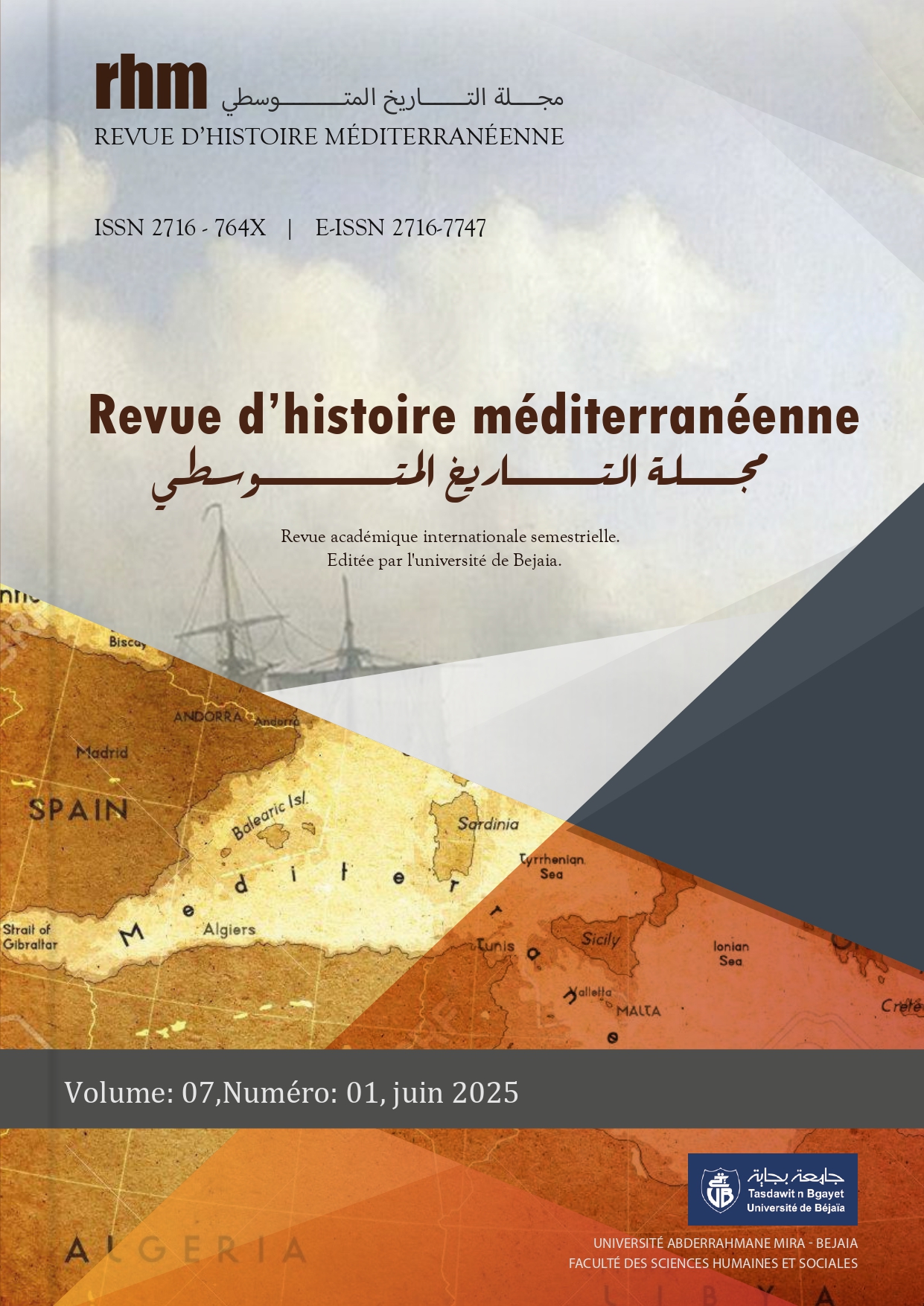Bacchus entre cosmos et chaos, et la résonance de son culte dans les provinces africaines
Résumé
Cet article traite du culte de Bacchus dans la culture gréco-romaine et son installation en Afrique du Nord. L’objectif est d’explorer la complexité du personnage de Bacchus, dieu du vin, du théâtre et du désordre, dont l'identité contradictoire balance entre ordre et chaos. Dieu des métamorphoses incessantes, représenté en homme puis en femme, démembré puis remembré, sa nature est insaisissable, il permet des interprétations infinies. A l’époque Homérienne, il n’était pas encore présent dans le panthéon principal, il a été placé ultérieurement parmi les dieux du Cosmos.
La question se pose sur les raisons derrière la présence d’une divinité représentant le chaos parmi les olympiens qui représentaient l’harmonie, sur les interprétations possibles de ce mythe écrit dans plusieurs versions par les poètes anciens et enfin son implantation dans les provinces africaines sous l’empire romain. L’article met en lumière la capacité du dieu à illustrer des paradoxes.
L’approche théorique est basée sur la compréhension de l’image du dieu décrit dans les sources anciennes. La partie pratique consiste à la récolte des données archéologiques liées à l’imagerie de Bacchus ; lampes à huile, mosaïque, inscriptions et reliefs. Pour l’analyse des données, un rapprochement entre la littérature antique (les sources antiques), les vestiges archéologiques (les représentations iconographiques durant la période romaine), les pensées philosophiques et analyses modernes a été effectué.
En explorant les origines du dieu dans les différentes versions, son influence dans la politique olympienne et ses diverses interprétations culturelles, le mythe de Bacchus pourrait avoir plusieurs significations, il représente une allégorie de la personnalité, une force chaotique maitrisée dans le cosmos, un cycle saisonnier de renaissance, un élément souillé qui nécessite purification, une forme de contestation contre les hiérarchies établies et bien d’autres.
Son établissement et sa présence en Afrique du Nord sont confirmés par divers vestiges archéologiques, tel que les mosaïques, les lampes, les inscriptions, les temples, statues, stèles et les reliefs. Il est représenté seul ou accompagné par un membre du thiase ainsi que par des illustrations distinctes de ses compagnons. Les populations ont adopté le dieu comme dieu de la fertilité, de la récolte et du bien-être. Il est également considéré comme un dieu sauveur promettant l'éternité à ses fidèles. Protecteur de l’abondance animale et végétale, il assure à ses fidèles le réconfort et la félicité dans la vie terrestre et dans l’au-delà.
La musique et la danse sont également des éléments essentiels dans le culte de Bacchus, les membres de son thiase (satyres et ménades) jouent des différents instruments de musique (à corde, à vent et à percussion) pour renforcer ces paysages sonores qui ne représentent pas des célébrations religieuses ordinaires mais s’inscrivent dans une logique initiatique qui vise à purifier et à rassembler les fidèles du dieu.










